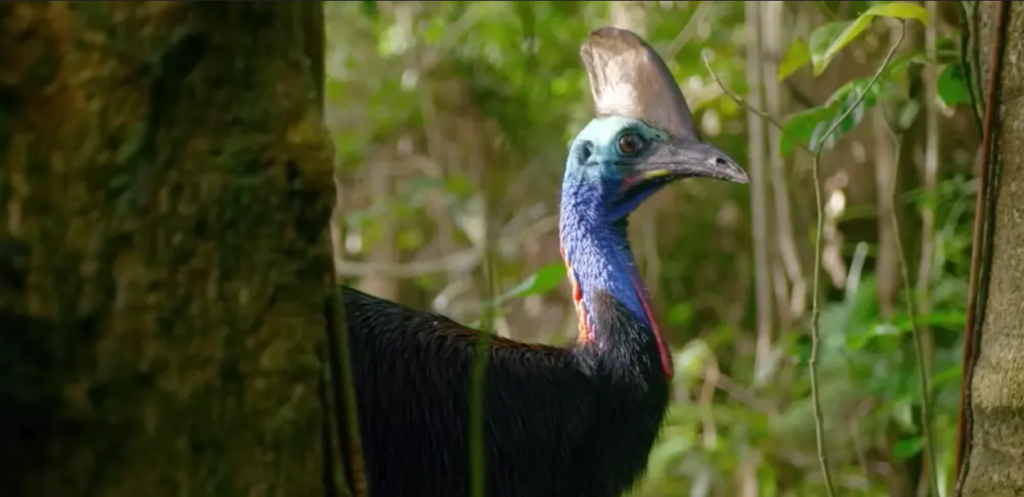The southern cassowary, often regarded as the world’s most dangerous bird, exhibits aggressive behavior in captivity and has been known to cause mortal injuries. Despite its shy and secretive nature in its native habitats of New Guinea and Northern Australia, encounters with humans, especially attempts to hunt them, can lead to perilous consequences.
In a study published in the Proceedings of the National Academy of Sciences, researchers from Penn State University revealed intriguing findings suggesting that as early as 18,000 years ago, people in New Guinea may have engaged in the near-adult rearing of cassowary chicks. This could potentially be the earliest evidence of humans managing avian breeding, predating the domestication of chickens by thousands of years.

Archaeologist Kristina Douglass, the lead author of the study, highlighted the discovery of 1,019 fragments of cassowary eggshell among artifacts and bird remains collected from rock shelter sites in the eastern highlands of New Guinea. Three-dimensional laser microscopy, statistical modeling, and comparisons with modern ostrich eggs allowed the researchers to determine the developmental stage of each egg.
While some early-stage eggs showed burn patterns, indicating cooking, a significant number of fragments, particularly those dating from 11,000 to 9,000 years ago, came from almost fully developed eggs. Douglass suggested that people might have been not only consuming the embryos but also hatching and rearing cassowary chicks.

Certain Indigenous groups on the island continue the tradition of raising cassowary chicks from eggs taken out of wild nests, as cassowary meat and feathers hold cultural and trade value. Douglass acknowledged that full domestication, akin to chickens, might not have occurred due to the birds’ challenging nature. Nevertheless, if early inhabitants indeed reared cassowaries, they would represent some of the earliest humans to systematically tame birds.
The study also highlighted the precision with which people harvested eggs late in the incubation period, implying a sophisticated understanding and management of cassowary movements. This suggests that foraging communities possessed intimate knowledge of the environment, shaping it in ways not previously imagined.

Megan Hicks, an archaeologist at Hunter College, noted that these findings could reshape timelines and geographies of domestication, emphasizing the need to pay closer attention to human interactions with avian species. April M. Beisaw, chair of anthropology at Vassar College, commended the study as an excellent example of how small and fragile remnants from the past can offer insights into important cultural practices.
However, the researchers humorously cautioned against attempting to hatch cassowaries at home, emphasizing the well-known dangers associated with these formidable birds.
